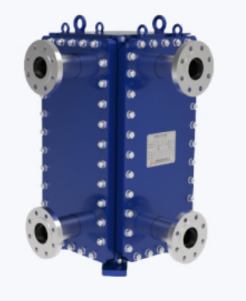5 key roles of plate heat exchanger gaskets.
Plate heat exchanger gaskets perform 5 key roles: ...
More
Heat transfer is a fundamental concept in thermodynamics, with three primary mechanisms: conduction, convection, and radiation. Understanding these processes is critical for industries ranging from HVAC to electronics cooling, where efficient thermal management can improve performance by 20-40% (ASHRAE data).
Conduction involves heat transfer through solid materials, accounting for ~60% of thermal management in industrial equipment. Metals like copper (thermal conductivity: 401 W/m·K) dominate this category. Convection moves heat through fluids (liquids/gases), with forced convection systems achieving 3-5x greater efficiency than natural convection in HVAC applications. Radiation transfers energy electromagnetically, contributing 10-15% of heat dissipation in high-temperature environments (>500°C). Modern insulation solutions combine all three principles, with aerogel composites reducing overall heat transfer by up to 39% compared to traditional materials (NASA research). Energy-efficient buildings now integrate phase-change materials that leverage these mechanisms, cutting HVAC costs by 30% (DOE statistics). Thermal engineers optimize these transfer types differently: conduction through material selection (e.g., graphene with 5300 W/m·K), convection via fluid dynamics, and radiation using reflective surfaces. The global heat transfer equipment market reached $17.2 billion in 2023 (Grand View Research), proving these principles' commercial significance across manufacturing, energy, and aerospace sectors.
Select the most popular foreign trade service products to meet your diverse needs
Learn more about the dynamics and professional knowledge of the foreign trade industry

Plate heat exchanger gaskets perform 5 key roles: ...
More
A gasket in heat exchanger seals surfaces, blocks ...
MoreAPI 662 defines standards for plate heat exchanger...
More
You can see clear differences between welded block...
More
Understanding welded heat exchanger's unique const...
More.jpg)
Printed Circuit Heat Exchangers are ultra-compact,...
MoreSelect the most popular foreign trade service products to meet your diverse needs
Explore more content related to foreign trade services

User Comments
Service Experience Sharing from Real Customers
Emily Johnson
Mechanical EngineerThis product provides an excellent explanation of the three types of heat transfer: conduction, convection, and radiation. Highly recommended for engineering students!
Michael Chen
Physics TeacherGreat resource for teaching heat transfer concepts. The examples are clear and practical, making it easier for students to understand.
Sarah Williams
HVAC TechnicianAs an HVAC professional, I found this product very useful for explaining heat transfer principles to clients. The visuals are particularly helpful.
David Brown
Chemical EngineerA solid overview of heat transfer mechanisms. It's a handy reference for anyone working in thermal systems design.